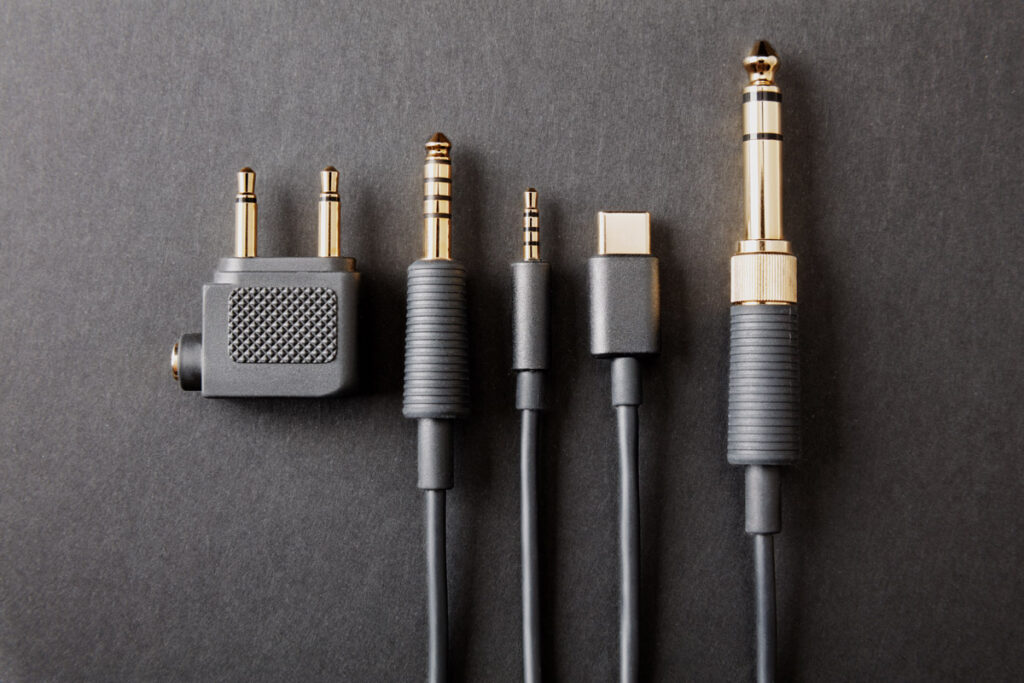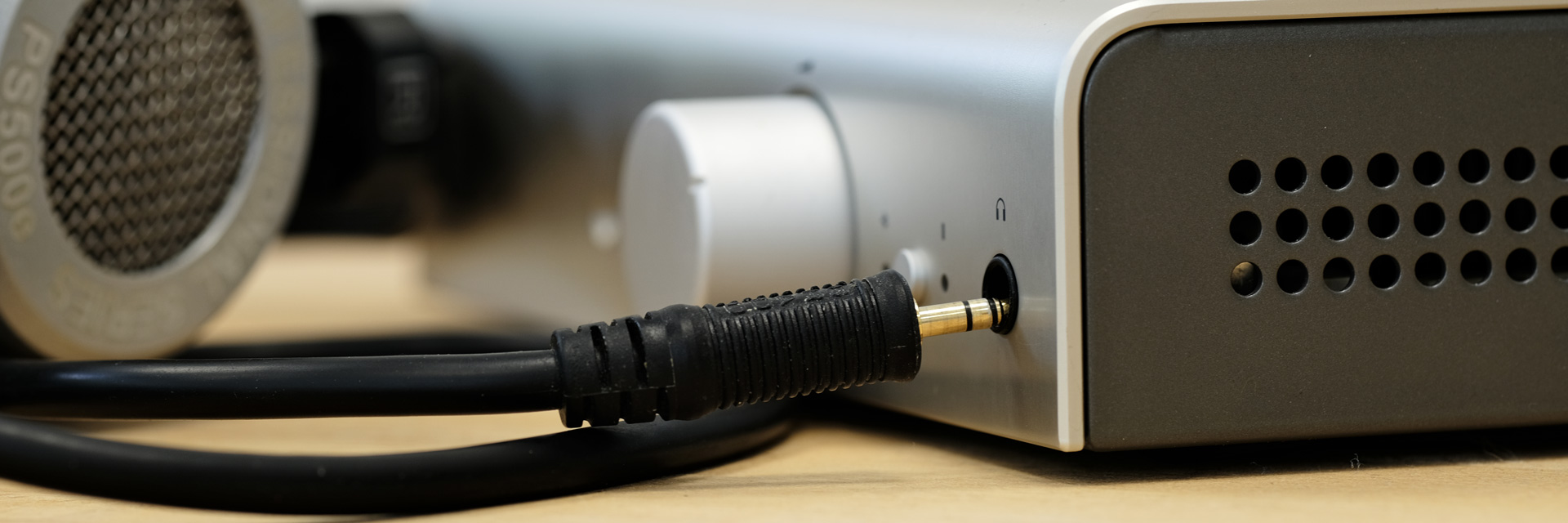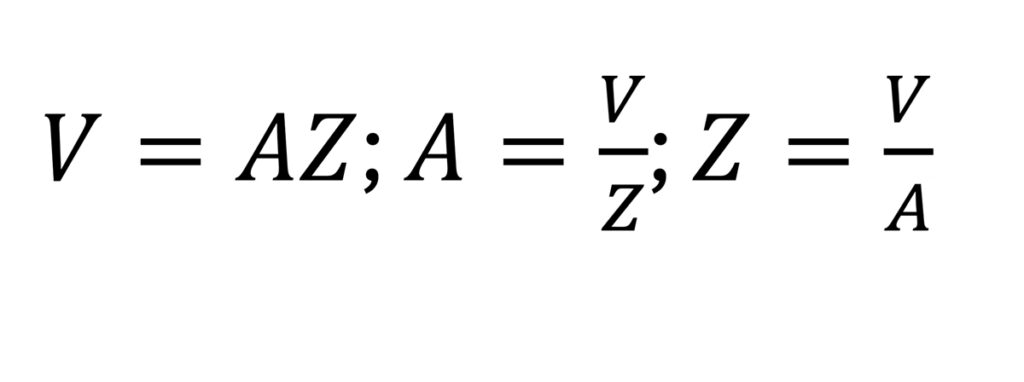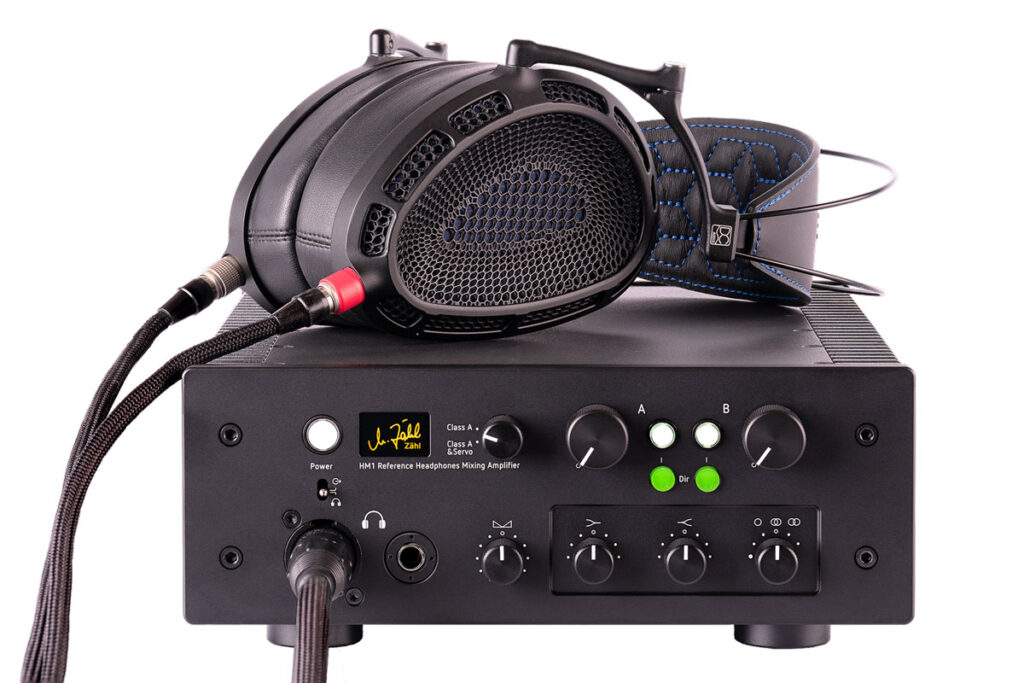The interaction between headphones and headphone amplifiers is a notoriously tricky subject. But what exactly are the difficulties? And more importantly, how do I make sure that my amplifier can properly drive my cans? Michael Zähl, founder and owner of Zähl Elektronik-Tontechnik, helps us find the answers.
In order to understand why pairing headphones and headphone amplifiers isn’t always easy, we first need to familiarize ourselves with Ohm’s law – so let’s start with a little excursion.

Electrical triangle
Ohm’s law states that the current A (measured in amperes) in a circuit increases in proportion to the applied voltage V (volts). The amount of current flowing at a given voltage is determined by the resistance – or impedance Z (Ohm) whenever we’re talking alternating current, like in music. The relationship triangle of these parameters can be described using the following three equivalent formulas:
The practical significance of these abstract formulas quickly becomes apparent when you consider the amplifier-speaker interaction, which works fundamentally the same way in both loudspeakers and headphones: The amplifier “pushes” the music signal as a voltage curve into the speaker, which then “pulls” current from the amplifier in response, according to its input impedance: An 8 Ω loudspeaker will draw 1/8 ampere from the amplifier for every volt, a 4 Ω speaker will accordingly draw 1/4 ampere. Since voltage times amperage equals power, the amplifier will output twice as much power into a 4-Ω transducer as into an otherwise identical 8-Ω model at the same volume dial setting and will therefore play 3 dB louder.
Speaking of power: the first question you rightly ask yourself when you look at an amplifier is whether it can provide enough of it. The sensitivity rating of the headphones, which is typically stated in dB at one watt, will give you an idea of how much power they require. What’s important to understand here is that dB is not a linear but a logarithmic quantity: Every 6 dB increase means a doubling of the sound pressure, or – in electrical terms – a doubling of the voltage swing. Since twice the voltage means twice the current flowing through the voice coils, the power required is quadrupled. Headphones with a 92 dB sensitivity will therefore require four times as much power as a 98 dB can to achieve the same sound pressure level.

The dreaded impedance
Since headphones utilize small drivers which are also located close to the ears, the power requirements for headphone amplifiers are relatively low. It’s the impedance that makes the choice of the right amplifier difficult. With loudspeakers, this is usually not too much of a problem, as the nominal value usually sits between 4 and 8 Ω. Things get much trickier with headphones, however, where you can encounter values from 15 Ω at the lower end all the way up to 600 Ω; different headphones therefore can place vastly different demands on the amplifier: High-impedance headphones require more voltage to achieve the same volume compared to lower impedance ones with the same sensitivity. On the other hand, the former place lower demands on the current delivery capability because they “draw” fewer amperes in order to achieve the same output. You should therefore always know the nominal impedance of your headphones before you start looking for suitable amplifier candidates.
As a general rule, higher-quality amplifiers naturally tend to be able to handle a wider range of impedances. “If you work with a stationary power supply, you can achieve a voltage swing of ±15 to ±18 volts without too much effort,” explains Michael Zähl, adding, “in a headphone amplifier like the HM1, I can comfortably cover impedances from 15 Ω to around 200 Ω with one architecture. When it comes to higher impedances, much depends on the sensitivity of the headphones.” A well-designed high-end amplifier will therefore be able to drive the vast majority of headphones without any problems. Only extremely high-impedance models may call for amps that can swing more voltage, as in, ±25 volts and more – otherwise there is a risk that the full power reserves of the amplifier can’t be called up even when turning the volume knob all the way to the right, meaning that you may find yourself unable to achieve the desired listening levels even though your amp has enough power reserves to deliver them.
The obvious answer could of course be: Simply build an amplifier with an extreme voltage swing and high current delivery capacity at the same time. However, the problem here is that a high voltage swing is logically achieved by a high voltage gain, which inevitably increases the noise floor. If you were to connect very low-impedance headphones to such an amplifier, you’d only use a fraction of the available gain and therefore be much closer to the noise floor. “You shouldn’t hear the noise directly,” says Zähl, ”but you may get dangerously close.” Of course, high voltages combined with high currents are necessary for headphones with particularly low sensitivity, which require high voltages despite low impedance, whereby said low impedance also drives the current up – in short: in these cases, you simply need lots of power.
The in-ear paradox
Since low-impedance drivers crave lots of current for a given voltage, it would seem logical to assume that high-impedance headphones are advantageous for mobile devices – but in fact the exact opposite is the case: “Due to the low battery voltage, we are of course well advised to try and get by with low voltages,” explains Zähl, though this is quite doable with in-ear headphones due to their even smaller diaphragms, which also sit much closer to the eardrum when compared to over-ears. Their current and power requirements are therefore very low anyway. Since the batteries of mobile devices always represent a bottleneck as a power supply, Zähl generally considers these to be rather unsuitable as a power source for high-end over-ears – but diplomatically rebuts this statement in the same breath: “There is nothing wrong with taking your favorite headphones to the park and sacrificing the last bit of sound quality on the go – you don’t have ideal conditions outside anyway. When at home, you can then listen properly via a stationary amplifier.”
So, what’s different, exactly?
Even though we are working with different numerical values, we can see that the same basic principles apply to headphones as to regular loudspeakers – a voice coil is a voice coil. So, what exactly is the difference between a headphone amplifier and a loudspeaker amplifier? The simple answer: basically nothing, but with a big but. Zähl puts the cart before the horse: “From a technical point of view, I could actually just take a 500 watt amplifier. It’s such a powerful source that I definitely won’t run into any problems on that front,” and immediately adds the ‘but’: “The problem is that the architecture of such an amplifier has some disadvantages. If you design a power amplifier that can mobilize several hundred watts, you need a corresponding power supply, large capacitances, powerful output transistors and so on. It should be obvious that such a colossus can’t trace microvolt audio signals with the same precision as an amplifier whose architecture is more akin to a preamplifier. It’s not just the voltage peaks that are important, but also the minimal signal components, which are extremely important for spatial imaging.”
Turned on its head, the same thought experiment illustrates an advantage for the headphone amplifier: Less power means fewer components, so you can usually get by with fewer gain stages. Another advantage of the low power requirement is that headphone amplifiers can easily work with regulated voltage. If the voltage is only rectified and filtered using capacitors, a certain residual ripple will naturally always remain, i.e. the output voltage of the power supply will fluctuate. A regulating element – in the simplest case a Zener diode – is a component or circuit that emits a constant voltage as long as at least the same voltage is present at its input: It reacts to changes in the incoming voltage by changing its own impedance and in this way equalizes the fluctuations at the input. As an example: if you are working with a rectified voltage that fluctuates between eleven and nine volts, you can insert a regulating circuit designed for eight volts (this is typically more complex than just the Zener diode described above) and thus tap a constant 8 volts, approaching ideal battery voltage. You may already guess where the problem lies with higher outputs. The fact that the input voltage must always be higher than the output voltage means that regulated voltage is inevitably lossy. This is fine for headphone amplifiers and preamplifiers, but for large power amplifiers this isn’t feasible for reasons of heat management.
Proponents of purist topologies may also see an advantage here: if you only need a few watts per channel, it makes sense to realize those in Class A. This is what Michael Zähl did with his HM1, although he didn’t necessarily intend to do so originally. Coming from a studio background, he has no reservations about negative feedback: “Negative feedback is a control loop that compares the input and output signals of an amplifier. If the output signal deviates, it is corrected accordingly.” Logically speaking, an error must first occur before it can be corrected. If you imagine this on a timeline, the correction necessarily follows the error, which can lead to hysteresis that manifests as the dreaded ringing on square-wave signals, for example. Zähl: “With the current state of the art, however, this correction behaviour can be optimized in such a way that even such signals are reproduced absolutely unaltered.” As far as distortion is concerned, an amplifier with negative feedback is known to measure much better under load than a Class A power amplifier. “However, our listening tests have shown that Class A can sound more relaxed with certain types of music,” says Zähl. He therefore leaves the choice up to the listener – the negative feedback can be toggled on the HM1. The HM1 being a Class A device, the feedback loop doesn’t have to deal with crossover distortion, but instead merely serves to reduce the output impedance, effectively correcting the non-linearities that the headphones generate at the output of the power amplifier. With the HM1, the impedance without negative feedback is slightly below 1 Ω. With negative feedback, it is in the low milli-Ω range – a clear recommendation for power-hungry, low-impedance headphones.
Despite all the technical considerations, Zähl ultimately considers the ear to be the final judge – when choosing a headphone amplifier, there is therefore only one correct approach in his mind: “Listen – everything else is nonsense.”
Special thanks to Michael Zähl.



